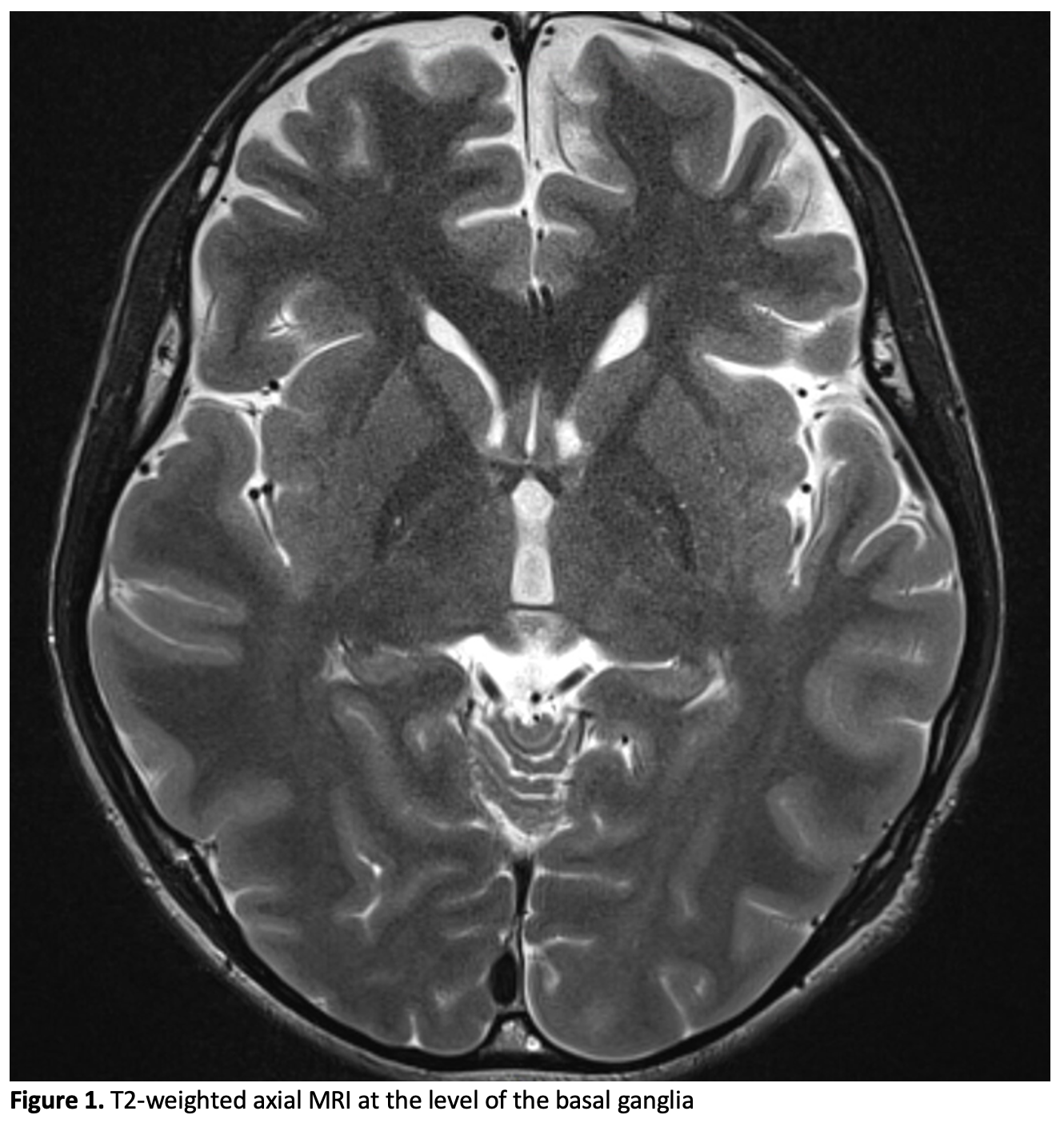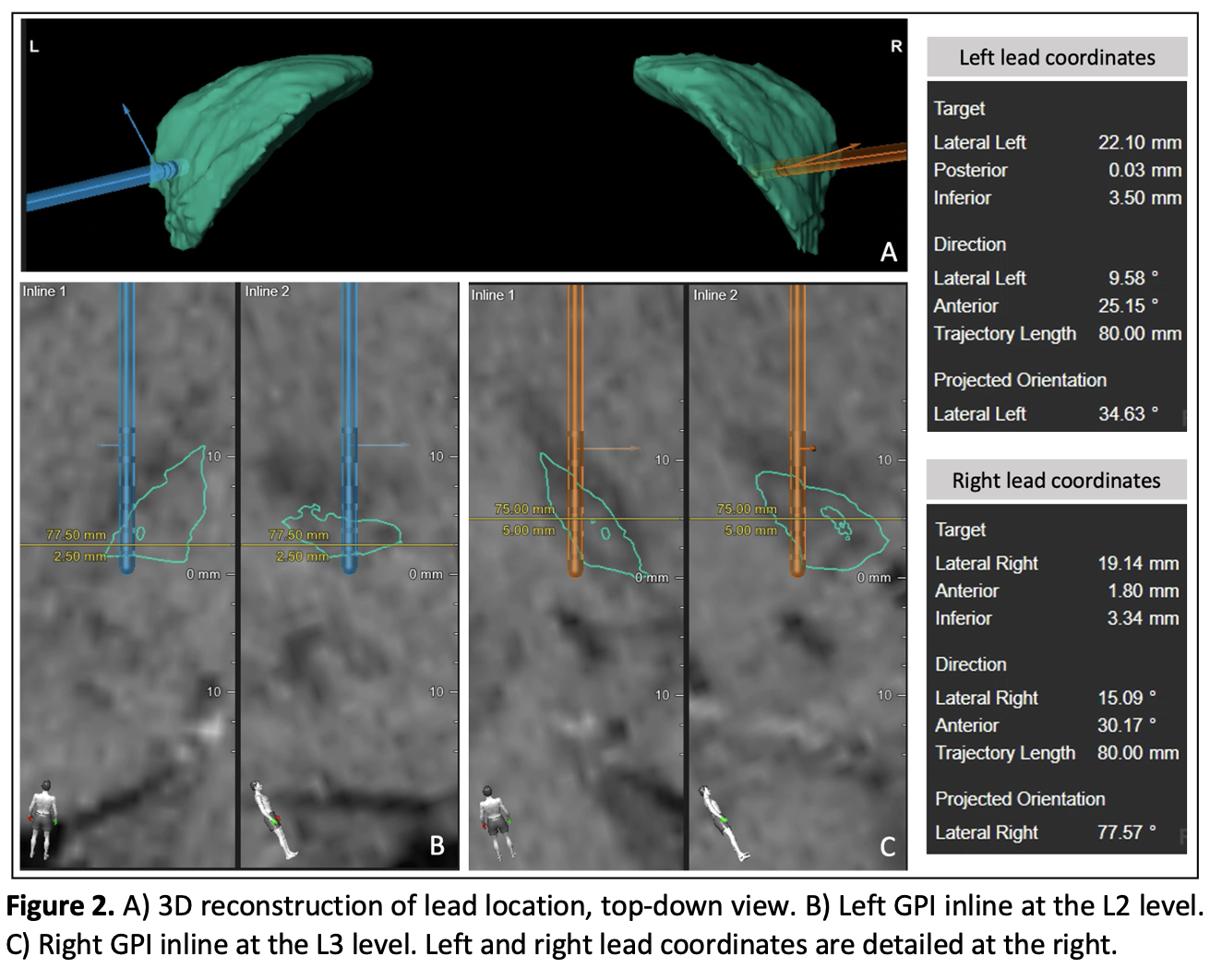Objective: To present a case of Spinocerebellar Ataxia type 3 (SCA3) with generalized dystonia as the predominant clinical phenotype treated with bilateral globus pallidus internus (GPi) deep brain stimulation (DBS).
Background: SCA3 is an autosomal dominant, neurodegenerative disorder caused by a CAG repeat expansion in the ATXN3 gene. Although the main clinical manifestation is progressive cerebellar ataxia, SCA3 is a clinically heterogenous condition that can present with generalized dystonia. DBS of the GPi has been increasingly recognized as an effective symptomatic treatment for dystonia. However, the effectiveness of GPi-DBS in patients with SCA3 has only been assessed in a few cases reported to date.
Method: Case report
Results: A 17-year-old male was followed for four years (2018-2022) at the Movement Disorders clinic. His mother was previously diagnosed with SCA3 after presenting with progressive ataxia. The patient’s genetic testing revealed an 80/23 CAG repeat expansion in the ATXN3 gene. He initially presented at age 10 with gait unsteadiness and incoordination; however, within just 3 years he developed severe generalized dystonia involving the trunk and all four limbs, as well as blepharospasm and oromandibular dystonia requiring nasogastric tube placement. He was wheelchair bound by age 13. MRI showed scattered T2-weighted subcortical hyperintensities [figure 1].
Trihexyphenidyl, baclofen, riluzole, carbidopa-levodopa, benzodiazepines, and botulinum toxin injections were prescribed but provided minimal relief. The patient underwent GPi-DBS placement in 2021 to treat severe dystonia. Lead location is illustrated in figure 2. Significant improvement was achieved for the eyelid and upper extremity dystonia with DBS programming [table 1]. Burke-Fahn-Marsden (BFM) disability scale decreased from 114.5 prior to DBS implantation, to 94 in his last follow-up visit.
Conclusion: Generalized dystonia is an infrequent manifestation of SCA3. To our knowledge, this is the second case of GPi-DBS as a therapeutic strategy for this population. Despite his rapid progressive course, our patient’s dystonia improved with bilateral GPi-DBS. DBS may be considered as a symptomatic treatment for dystonia in SCA3 patients.
To cite this abstract in AMA style:
D. Rodriguez Gomez, B. Dalm, V. Khurana, C. Goas, Z. Jordan, B. Changizi. A case of dystonia-predominant spinocerebellar ataxia type 3 treated with bilateral deep brain stimulation to the globus pallidus internal segment [abstract]. Mov Disord. 2023; 38 (suppl 1). https://www.mdsabstracts.org/abstract/a-case-of-dystonia-predominant-spinocerebellar-ataxia-type-3-treated-with-bilateral-deep-brain-stimulation-to-the-globus-pallidus-internal-segment/. Accessed April 18, 2025.« Back to 2023 International Congress
MDS Abstracts - https://www.mdsabstracts.org/abstract/a-case-of-dystonia-predominant-spinocerebellar-ataxia-type-3-treated-with-bilateral-deep-brain-stimulation-to-the-globus-pallidus-internal-segment/



